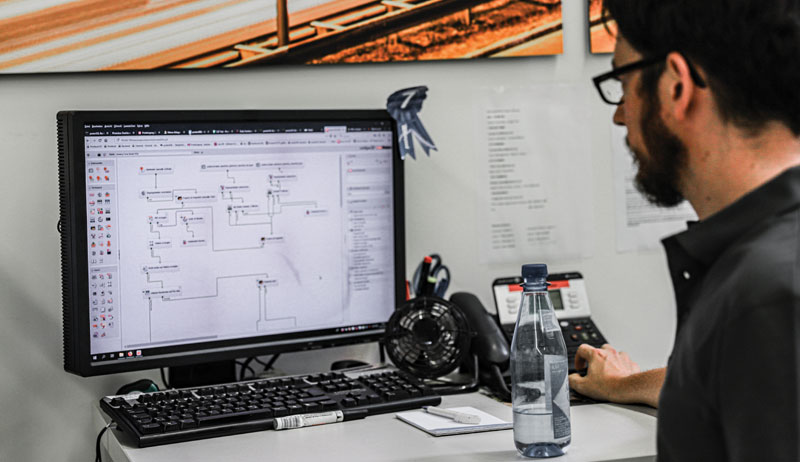What is ‘middleware’, and why should large-format PSPs care? Well, as OneVision Software marketing manager Raphael Gruber, reiterates, everyone is talking about end-to-end digitisation of production processes, but what about the bit in the middle? We know that integration and connectivity are important, but so often systems do not properly ‘talk’ to each other. Middleware is intended to smooth out that problem.
As Gruber points out, if a digitisation and automation project is designed holistically, the focus is on middleware - software solutions that enable vendor-independent integration into existing system landscapes, thus enabling comprehensive connectivity.
Basically, middleware creates an ecosystem, integrating systems from file input to shipping - and it does so independently of machines and software systems already in use. The middleware flexibly integrates with all existing systems and links the individual components with each other. This allows each component to focus on the task in the production process for which it was created. The Rip is not loaded by oversized files, and the utilisation of the printing and finishing machines is optimised. The middleware prepares the files accordingly, making production smoother and more efficient.
New markets or distribution channels, such as Webshops, can also easily be handled, as the middleware controls and prioritises them accordingly.
The middleware first connects to the file input. This can be Webshops, ERPs, MIS, but also hotfolders, email inboxes or any other system that outputs structured data. The middleware retrieves order information and production files from these systems. Each file is checked individually, corrected if necessary and optimised for production. The prepress process is thus fully automated.
The middleware then transfers the prepared print file to the appropriate press/printer, and optimised cutting files to the cutting systems. Order sheets or shipping labels can be generated for logistics and shipping too.
Wide-format printers in particular - where applications and jobs can be so varied - can obviously benefit from such systems. It is often mistakenly assumed that individual jobs cannot be automated, but it is possible.
When selecting middleware, it is important to ensure that the software is as flexible and dynamic as possible as that’s when the strengths of middleware solutions truly pay off.
Digital job tickets are the key to dynamic and highly flexible processing. They contain all the relevant job details, allowing print files to be routed accordingly in the middleware workflow. For example, a flag is routed to automatic hemstitching, whereas a mega poster is automatically tiled into individual panels, or small-format stickers are nested to save substrate.
Practical examples from various areas of wide-format printing show that the use of reliable middleware is the key to the future sustainability of printing companies.
Aura Brand Solutions is a UK-based wide-format visual communications company that specialises in train and vehicle fleet wrapping. In this area, the company works with huge file sizes. By using middleware, the company says print files could be prepared up to 80% faster than they could before.
The situation is similar at wide-format printer Kleinhempel, whose core business is signage, building banners and large-format prints. Before the implementation of the middleware, 90% of the staff´s time was spent on repetitive, routine tasks, especially in prepress. With the software, much more could be automated - checking, optimising and preparing oversized files, transferring them to the production kit and creating shipping labels are now fully automated.
An impressive growth has been achieved by the digital printing company Siepro. In 2017, the company was using two large-format roll-to-roll presses for label production. Since then, the machine park has grown to 18 printing systems and 11 cutting systems. Middleware has made a significant contribution to this growth. Siepro uses it to automate the entire production process, starting from file input, to file preparation, nesting, printing and finishing of the labels.
By using middleware, these printing companies have been able to automate their production according to their needs, increase their efficiency, and prepare themselves for the future.


